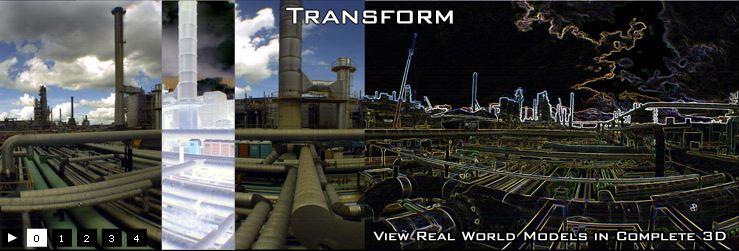Intelisum receives U.S. Patent for GPS-Enhanced Laser Scanning System
On March 30,2010, Intelisum Inc. received a U.S. Patent for “GPS-enhanced system and method for automatically capturing and co-registering virtual models of a site”. According to the United States Patent and Trademark Office website, this was originally filed on June 30, 2006. Details on the filing are listed below and the filing can be found here.
BACKGROUND
1. Field of the Invention
The present invention relates generally to three-dimensional modeling. More specifically, the present invention relates to a system and method for capturing three-dimensional virtual models of a site that can be co-registered and visualized within a computer system.
2. Description of Related Background Art
Lidar (light detection and ranging) uses laser technology to make precise distance measurements over long or short distances. One application of lidar is the range scanner, or scanning lidar. In a typical range scanner, a lidar is mounted on a tripod equipped with a servo mechanism that continuously pans and tilts the lidar to scan a three-dimensional area. During the scanning process, the lidar makes repeated range measurements to objects in its path. The resulting range data may be collected and serve as a rough model of the scanned area.
Physical limitations of the range scanner constrain the maximum resolution of the range data, which decreases with distance from the range scanner. At large distances, the range scanner may not be able to discern surface details of an object. A lack of continuous spatial data (gaps between points) and a lack of color attributes are significant limitations of conventional range scanners. Furthermore, a range scanner only scans objects within the lidar’s line-of-sight. As a result, no data is collected for the side of an object opposite to the lidar or for objects obscured by other objects (“occlusions”).
To obtain a more complete and accurate model, the range scanner can be moved to other scanning locations in order to scan the same area from different perspectives and thereby obtain range data for obscured objects. Thereafter, the resulting sets of range data can be merged into a single model.
Unfortunately, the merging of sets of range data is not automatic. Human decision-making is generally required at several steps in the merging process. For instance, a human surveyor is typically needed to determine the relative distances between the range scanning locations and the scanned area. Furthermore, a human operator must manually identify points in common (“fiducials”) between multiple sets of range data in order to align and merge the sets into a single model. Such identification is by no means easy, particularly in the case of curved surfaces. The need for human decision-making increases the cost of modeling and the likelihood of error in the process.
A system for capturing a virtual model of a site includes a range scanner for scanning the site to generate range data indicating distances from the range scanner to real-world objects. The system also includes a global positioning system (GPS) receiver coupled to the range scanner for acquiring GPS data for the range scanner at a scanning location. In addition, the system includes a communication interface for outputting a virtual model comprising the range data and the GPS data.
The system may further include a transformation module for using the GPS data with orientation information, such as bearing, for the range scanner to automatically transform the range data from a scanning coordinate system to a modeling coordinate system, where the modeling coordinate system is independent of the scanning location. A co-registration module may then combine the transformed range data with a second set of transformed range data for the same site generated at a second scanning location.
The system also includes a digital camera coupled to the range scanner for obtaining digital images of the real-world objects scanned by the range scanner. The system may associate the digital images of the real-world objects with the corresponding range data in the virtual model.
A system for building a virtual model of a site includes a communication interface for receiving a first set of range data indicating distances from a range scanner at a first location to real-world objects. The communication interface also receives a first set of GPS data for the range scanner at the first location. The system further includes a transformation module for using the first set of GPS data with orientation information for the range scanner to automatically transform the first set of range data from a first local coordinate system to a modeling coordinate system.
A system for modeling an object includes a range scanner for scanning an object from a first vantage point to generate a first range image. The system further includes a GPS receiver for obtaining GPS readings for the first vantage point, as well as a storage medium for associating the first range image and the GPS readings within a first virtual model.
The range scanner may re-scan the object from a second vantage point to generate a second range image. Likewise, the GPS receiver may acquire updated GPS readings for the second vantage point, after which the storage medium associates the second range image and the updated GPS readings within a second virtual model. A transformation module then employs the GPS readings of the virtual models with orientation information for the range scanner at each location to automatically transform the associated range images from local coordinate systems referenced to the vantage points to a single coordinate system independent of the vantage points.






Leave a Reply
Want to join the discussion?Feel free to contribute!